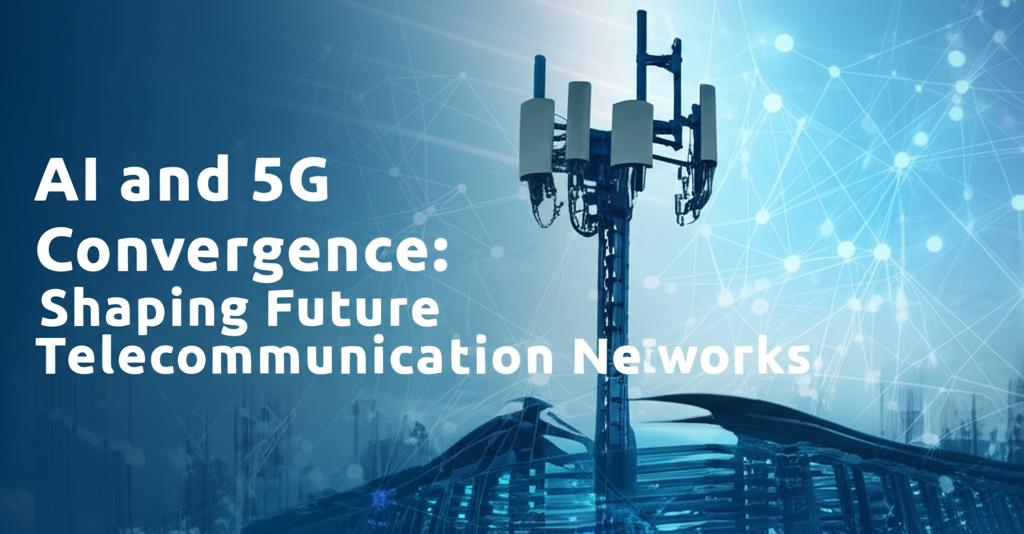The convergence of Artificial Intelligence (AI) and 5G wireless technology marks a significant transformation in the telecommunications sector. These two powerful technologies, each revolutionary in its own right, are increasingly intertwined, creating intelligent, self-optimizing networks that promise to reshape industries and daily life. 5G provides the high-speed, low-latency, and massive connectivity foundation necessary for sophisticated AI applications, while AI delivers the intelligence needed to manage the complexity and unlock the full potential of 5G networks.
A Symbiotic Relationship: Enhancing Network Capabilities5G networks offer unprecedented capabilities: ultra-fast data speeds (up to 100 times faster than 4G), significantly reduced latency (delays measured in milliseconds), and the capacity to connect millions of devices per square kilometer. This robust infrastructure is the perfect enabler for AI. Real-time AI applications, from autonomous vehicles requiring instantaneous decision-making to complex industrial automation, depend on the low latency and high bandwidth 5G provides. Furthermore, the massive connectivity supports the vast Internet of Things (IoT) ecosystem, generating huge volumes of data that AI can analyze for insights.
Conversely, AI is becoming indispensable for operating and optimizing 5G networks. The complexity of managing dynamic traffic demands, diverse applications (like network slicing for specific use cases), and ensuring consistent performance across billions of connections is immense. AI algorithms analyze vast amounts of real-time network data to:
- Optimize Network Performance: AI monitors traffic patterns, predicts congestion, automatically reroutes data, and allocates bandwidth dynamically, ensuring smooth operation and optimal resource utilization.
- Enable Predictive Maintenance: By analysing data from network equipment, AI can predict potential failures before they disrupt service, allowing operators to perform proactive maintenance, reducing downtime and costs.
- Enhance Network Security: AI systems detect anomalies in traffic patterns and user behaviours in real-time, identifying potential cyber threats and enabling automated responses like rerouting traffic or activating security protocols.
- Improve Energy Efficiency: AI can analyze network usage patterns and optimize power consumption by dynamically switching off unused resources during low-traffic periods, leading to significant energy savings.
- Streamline Operations: AI automates routine tasks like fault detection and network configuration adjustments, freeing up human engineers for more strategic work.
The combined power of AI and 5G is unlocking transformative use cases across numerous sectors:
- Smart Cities: Real-time traffic management, optimized energy grids, efficient public safety responses, and enhanced infrastructure monitoring.
- Industry 4.0: Automated factories with AI-powered robots communicating seamlessly over 5G, predictive maintenance minimizing downtime, and optimized supply chains.
- Healthcare: Remote patient monitoring with real-time data transmission, AI-assisted diagnostics, remote surgeries enabled by low latency, and personalized precision medicine.
- Autonomous Vehicles: Real-time communication between vehicles and infrastructure (V2X), supported by ultra-low latency for enhanced safety and navigation.
- Immersive Entertainment: High-fidelity augmented reality (AR) and virtual reality (VR) experiences for gaming, education, and collaboration, requiring high bandwidth and low latency.
- Retail: Personalized customer experiences through real-time data analysis, optimized inventory management, and AI-powered chatbots for customer service.
- Agriculture: Precision farming techniques using sensor data analysed by AI to optimize irrigation, fertilization, and pest control.
For telecommunication providers and enterprises, the AI-5G convergence offers significant advantages. It allows for improved operational efficiency, reduced costs, and enhanced service quality. AI-driven insights help personalize customer experiences, leading to increased satisfaction and loyalty. Furthermore, the ability to offer tailored network slices and advanced AI-powered services opens up new revenue streams and business models, helping operators monetize their substantial 5G investments. Companies integrating these technologies gain a competitive edge, positioning themselves for growth in an increasingly digital economy.
Challenges and the Road AheadDespite the enormous potential, challenges remain. Integrating AI into complex 5G networks requires significant computational power and sophisticated algorithms. Ensuring data privacy and security across interconnected systems is paramount. Managing the vast amounts of data generated and ensuring data quality for AI training are also critical considerations. Integration with existing legacy systems and addressing concerns about the interpretability of some AI models are ongoing tasks.
Looking forward, the synergy between AI and 5G will only deepen. The evolution towards 6G promises even greater capabilities, further accelerating the AI-powered revolution. Edge computing will become increasingly important, allowing AI processing closer to the data source for even lower latency and real-time decision-making. We can expect continued advancements in network automation, greater personalization of services, and the proliferation of intelligent applications across all facets of life and business. The ongoing convergence of AI and 5G is laying the foundation for a smarter, faster, and more connected future.

